Disaster Recovery as a Service by Cloud Engine – Fortifying Enterprise Continuity and Data Recovery on the Cloud
Disaster Recovery as a Service is the replication of the hosting of physical or virtual servers by a third party to provide immediate recovery at zero losses in the event of a man-made or natural catastrophe. Cloud Engine’s DRaaS model, powered by any hyper scaler or private, hybrid, or multi-cloud of choice, is based on a unique 4-way Disaster Recovery architecture that improves business continuity and security. It is cost-effective and delivers the best-in-class benefits over many traditional models.
72% of businesses fail to meet their expectations for IT disaster recovery. Don’t be one of them and get a fully-functional DRaaS solution for your workloads today!
40%-60% of small businesses never reopen after a disaster
Downtime costs companies anything between
$10K to $5M per hour
OWNERSHIP OF CUSTOMER EXPERIENCE AND BUSINESS INTERUPTION

Eager to shift to a cloud-ready DR strategy?
Connect with our DRaaS experts today
Invest in the Right DR Strategy: Why Architect it on Cloud instead of designing On-prem?
Evaluate Infrastructure
Assess your current environment and identify requiremtents.
Develop Strategy
Determine the appropriate methods,services, and tools to meet the need.
Implement and Test
Deploy cloud services and ensure rapid, reliable recovery.
Develop a Disaster Recovery Solution tailored to Business IT systems, workloads, and dataflows
Disaster Recovery as a Service is critical to business continuity. No business should start its operations without having a failsafe strategy to continue operations even during disasters. DRaaS proves effective here as it allows organizations to back up their data and IT infrastructure in a separate cloud computing environment, hosted on multiple datacenters with auto data replication, monitoring, and copying across those locations. DRaaS usually focuses on a short recovery point objective. During a natural or a man-made disaster, the data is restored to the nearest “current” point possible.
Disaster Recovery is critical to business continuity. Many incidents happening worldwide can stop your operations and halt the progress of the business, which include:
- Natural disasters
- Cyberattacks
- Terrorist attacks
- Equipment failures and power outages
Cloud Engine Disaster Recovery services are built to offer maximum availability, and near-zero downtime is implemented for zero loss, null disruption outcomes. DRaaS solution is cost-effective and delivers best-in-class benefits over many traditional models. Through Cloud Engine DRaaS, you’ll also avoid unnecessary expenses like buying and licensing your servers, along with hardware and software.
Safeguard YourMission- Mission-Critical Applications
Cloud Disaster Recovery services offer best-in-class security and high standard compliance related to cryptographic algorithms, key management, and data encryption. Cloud Engine and our team of experts deploy necessary measures and tools as prescribed by the Cloud platform (AWS, Azure, Oracle, or GCP) to protect mission-critical applications.
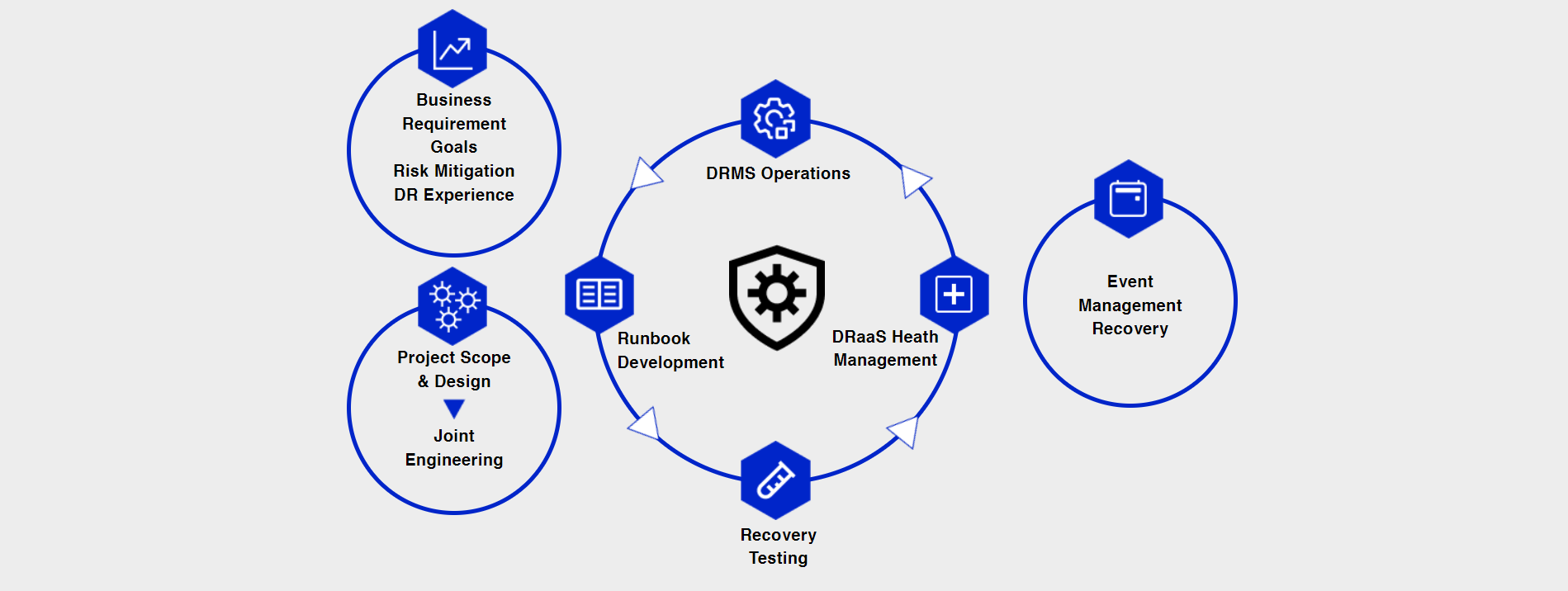
Lower Downtime
DRaaS will reduce downtime and data loss exposure for critical business functions. The solution also offers high-end capabilities that will cause negligible data loss when the system suffers from this issue.
Avoid Data Loss
Enterprises that suffer from data loss rarely get back on their feet to resume operations. But with Cloud Engine’s custom Disaster Recovery Strategy, even the smallest fraction of data will not be lost during a disaster, and your business continues like normal.
Business Continuity
Business interruptions play an obstacle to business growth, productivity, and customer service. Robust disaster recovery solutions help to ensure business continuity irrespective of the magnitude of the disaster faced by a company.
Lower CAPEX
A significant reason why Cloud Engine’s DR Solutions offer cost-effective measures with high-quality service, whether the service is on Google, AWS, Oracle, or Azure. Our expertise also gives enterprises the advantage of the pay-per-use model. This way, enterprises can manage their expenses more efficiently and avoid unnecessary purchases like buying the complete suite.
Cloud Engine Named a Visionary in 2021 Gartner® Magic Quadrant™
for Public Cloud IT Transformation Services 2021
Cloud Engine Advanced Disaster Recovery as a Service (DRaaS) Implementations: Backed by Global Hyperscaler Cloud Platforms



Choose your DR and BCP approach wisely
To automate anything and everything and to be able to scale your automation initiatives enterprise-wide, you will need a comprehensive suite/platform like ours that includes Document Ingestion Engine, Process Analytics Solution, RPA and more.
 This involves a quick Recovery Point Objective (RPO) and Recovery Time Objective (RTO). Hot DR is ideally used and absolutely vital for Mission Critical applications such as core financial and banking applications.
This involves a quick Recovery Point Objective (RPO) and Recovery Time Objective (RTO). Hot DR is ideally used and absolutely vital for Mission Critical applications such as core financial and banking applications. This has a slightly higher side of data recovery time compared to the Hot and Warm DR, involving a higher RTO and RPO. Used ideally for Non Critical applications.
This has a slightly higher side of data recovery time compared to the Hot and Warm DR, involving a higher RTO and RPO. Used ideally for Non Critical applications.
 It involves backing up your systems and restoring them from backup in case of any disaster. We implement strategies that help reduce your backup footprint using a method of deduplicating data at each node, job, and site. As a result, you get speed backup and faster recoveries. Cloud4C is known for its global deduplication systems that efficiently execute bare metal recoveries.
It involves backing up your systems and restoring them from backup in case of any disaster. We implement strategies that help reduce your backup footprint using a method of deduplicating data at each node, job, and site. As a result, you get speed backup and faster recoveries. Cloud4C is known for its global deduplication systems that efficiently execute bare metal recoveries. Focus on applications and infrastructure with a slightly higher RPO and RTO. May involve non-core banking applications, DMS, MOSS and print and file servers.
Focus on applications and infrastructure with a slightly higher RPO and RTO. May involve non-core banking applications, DMS, MOSS and print and file servers.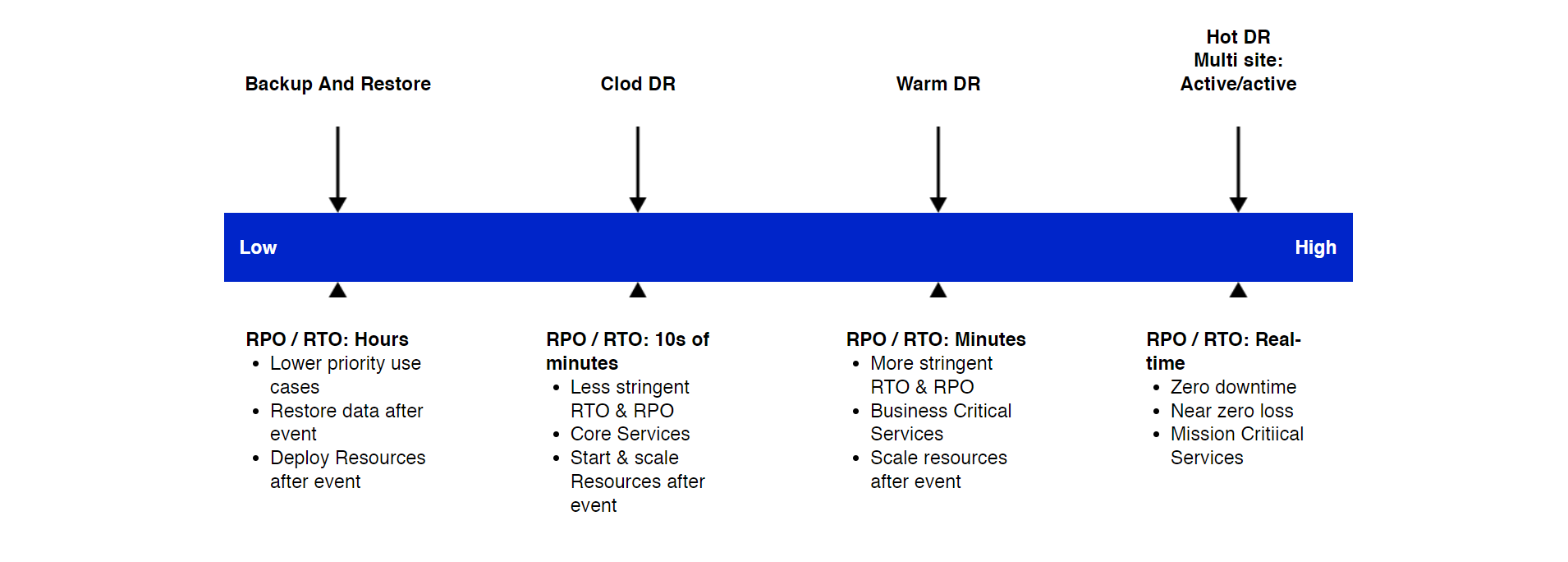
Choose the Right DRaaS Management Model:Why Opt for Fully Managed Services?
Before you finalize your decision to finalize the platform and service provider for disaster recovery solutions, you must know about the main models out of which one will fit best for your requirements. This comparison chart below would enlighten you on the reasons why most modern enterprises opt for fully managed DRaaS model.
Managed DRaaS
- A third party takes over all disaster recovery responsibilities
- Requires higher investment than other DRaaS models but meets all your unique business requirements
- Recovery SLA is matched to the unique business requirements
- The provider will be responsible for recovery in the case of an event
Assisted DRaaS
- Part of the responsibilities are managed by the company and part by a third party vendor
- Lower investment is required compared to assisted DRaaS. Managing the model may prove expensive later.
- Assisted DRaaS does not offer a recovery SLA
- The client is responsible for recovery during an event but the service provider may step in when the IT team is unavailable
Self-service DRaaS
- The company manages all the disaster recovery responsibilities
- Expensive as the company needs to set up all the provisions for the IT team by themselves
- Recovery SLA depends on the availability of the IT team
- The client is responsible for recovery during an event
Let Cloud Engine streamline your continuity planning end to-end.
Operate without the jitters of disruption.
Expertise with Cloud Native DRaaS Tools and Solutions
Azure
Azure Backup
Entire end-to-end processes
Azure Site Recovery
Designing and running a cloud-native DRaaS
Azure Archive Storage
Archive databases on the cloud at economical prices
AWS
CloudEndure
Minimizes downtime and data loss with the fast, reliable recovery of on-premises and cloud-based applications using affordable storage, minimal compute, and point-in-time recovery.
AWS DataSync
Replicates files into Amazon Simple Storage Service (Amazon S3) for online copies that you can archive to Amazon S3 Glacier with an Amazon S3 Lifecycle Management Policy.
AWS Storage Gateway
Creates a seamless connection between on-premises environments and AWS. During downtime, the production resumes after backup data is sent to the on-premises environment.
GCP
Actifio GO
Google backup and disaster recovery SaaS offering which provides centralized, application-consistent protection for environments and applications running on-premises and on Google Cloud.
Compute Engine
Secure and customizable compute service that lets you create and run virtual machines on Google’s infrastructure.
Google Cloud Deployment Manager
Infrastructure deployment service that automates the creation and management of Google Cloud resources.
Cloud Data Loss Prevention
A Fully managed service that’s architected to help discover, classify, and protect all critical data and workflows
GCP
Data Guard
Deploys one or more synchronized replicas of a production database in physically separate locations to provide high availability, comprehensive data protection, and disaster recovery for mission-critical data.
Oracle Recovery Manager (RMAN)
Provides a comprehensive foundation for on-time backups, recovery, and Oracle Database migration.
Object Storage
Stored objects are automatically replicated across fault domains or across availability domains
Cloud Engine End-to-end Disaster Recovery Services:Any Cloud, Any Ecosystem, Any Complexity
With Cloud Engine, you’ll find a completely automated DR Solution framework for every platform. Our unique workload management system supports multiple clouds and hybrid deployment scenarios irrespective of configurations and applications. Cloud Engine offers multiple advantages when it comes to DR solutions.
Cloud Engine End-to-end Disaster Recovery Services:Any Cloud, Any Ecosystem, Any Complexity
With Cloud Engine, you’ll find a completely automated DR Solution framework for every platform. Our unique workload management system supports multiple clouds and hybrid deployment scenarios irrespective of configurations and applications. Cloud Engine offers multiple advantages when it comes to DR solutions.
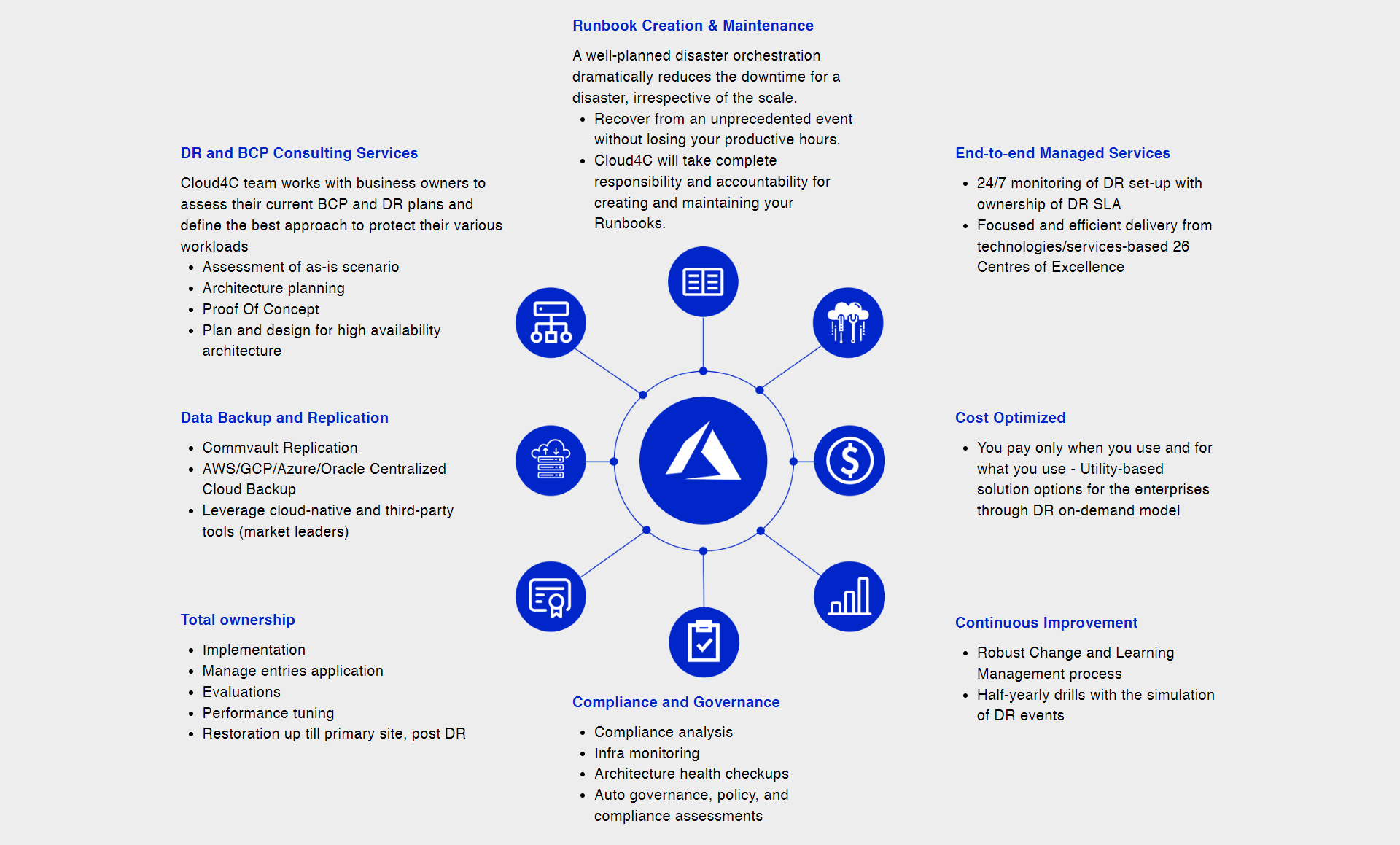




OEM Certified Replication Tools (SQL Always on, Log Shipping, SRS, HRS, Oracle Data Gaurd, File Sync)

Connect with our DRaaS experts today to realize your BCP on the cloud. Get Started with a FREE Assessment Session
DRaaS Solution: Global and Regional Support
Cloud Engine helps deploy your web presence across Azure availability zones, high availability clusters in the green (group) datacentres and pods set up globally so that if a primary location ever goes offline, a secondary location will kick into action in a manner that is seamless and transparent. The end-user experience is par excellence as a result and business never skip a beat.
Global Footprint | Headquartered in Singapore
USA | LATAM | Europe | APAC | Middle East | India
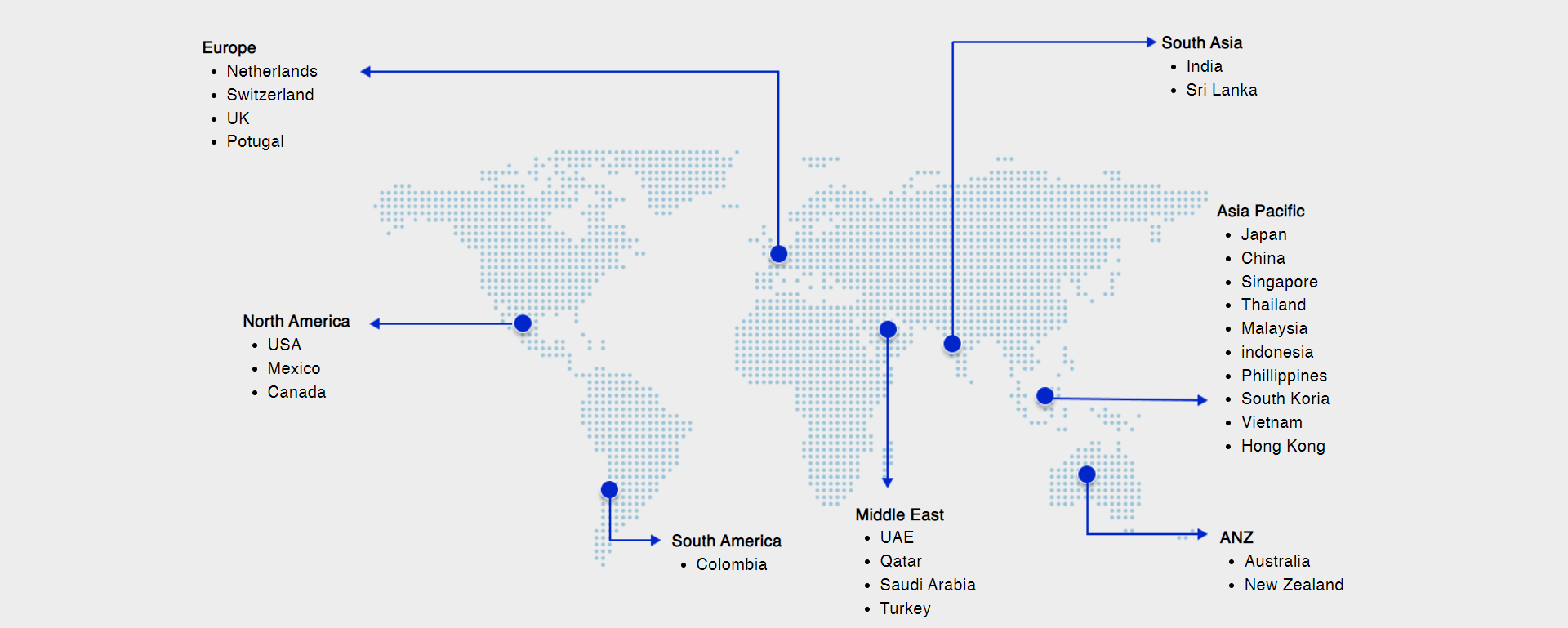
26 Countries – 52 Locations
Local In-country services
Certified and skilled Global SMEs
Security and Compliance during Disaster Recovery
Disaster Recovery is a complex and multi-faceted operation and during a disaster, all your resources and energies are focused to ensure a speedy and complete recovery. However, security attacks and data breaches are more likely to happen when you are in the most vulnerable state. That’s why it’s of paramount importance that systems and data are always secure (at rest or in transit), especially during a DR operation.
Cloud Engine frameworks, methodologies, processes and people are pre-compliant with leading regulations and standards in the industry and in different geographies. This is why you can trust us to manage and augment your Business Continuity programs.

Addressing Global Compliance needs
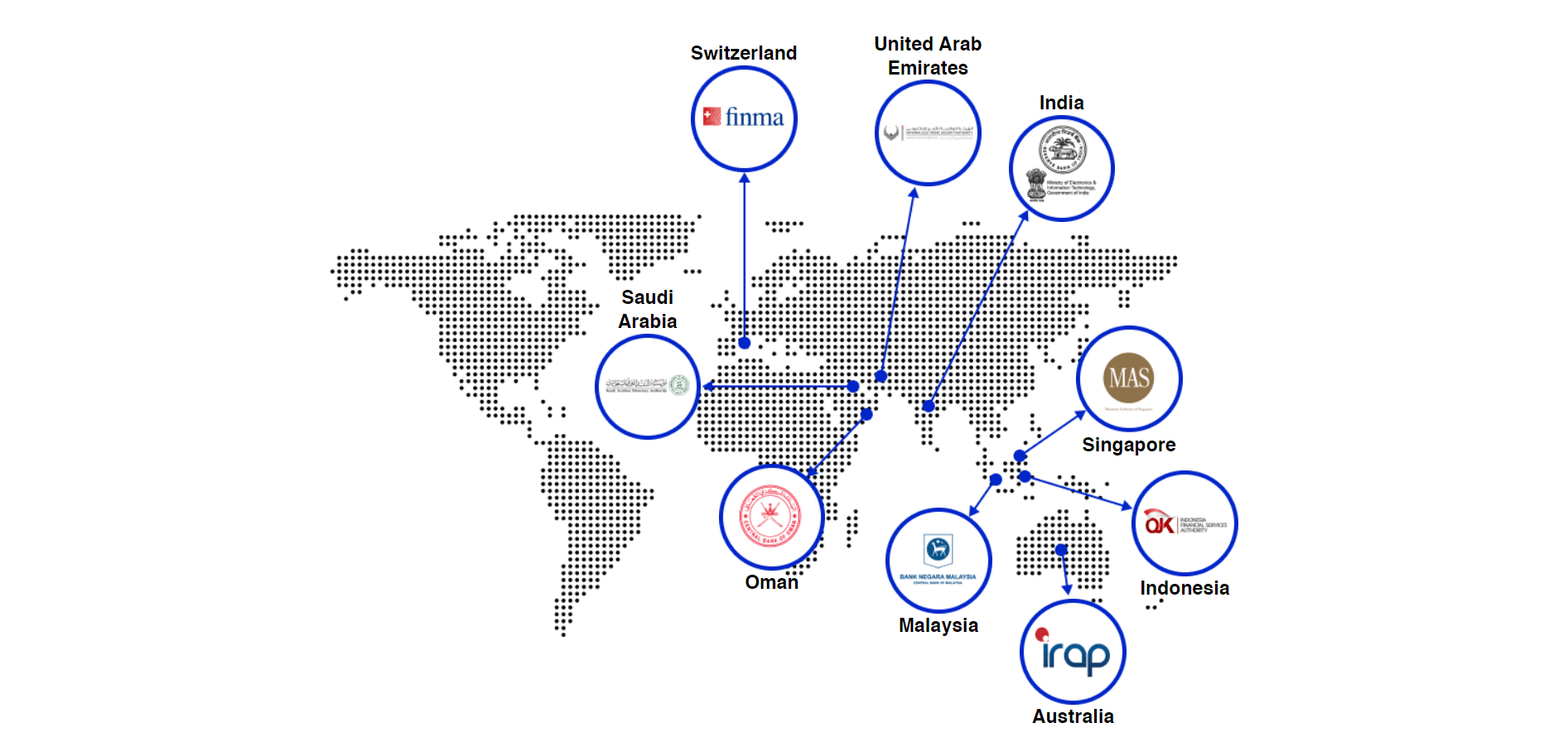
Industry Specific





Worldwide Standards







DRaaS Solution: Notable benefits
High Speed Recovery
Recovery Orchestration and Fastest Activation
Negligible Data Loss
DRaaS Platform Compliant Protection
Recovery Orchestration and Fastest Activation
Negligible Data Loss
Why Partner with Cloud Engine for your DR and BCP requirements?
World’s leading automation-driven and application-focused cloud MSP
Experience in managing AWS/Azure/GCP/Oracle engineered systems with AIOps-powered Managed Operations
Low to No CAPEX
On-demand volume creation using dynamic provisioning
Rapid implementation of Cloud Engine powered automated DR setup
Industry best response times thanks to the automation tools that deploy solutions and move to backups as and when the need arises
Freedom to choose the critical data and components that need backup and pay only for them
Robust compliance regulations adhering to international and local business standards
24x7x365 monitoring of DR setup
4-tiered cloud-based DR services with customized DR capacity
Presence in 26 countries and 52 locations, 26 Centers of Excellence
AWS/Azure/GCP/Oracle Cloud Native and Third Party Replication Tools
Zero downtime and data loss with fully automated DR solutions and backup systems
High availability storage, databases, backup, and recoveryMigrated 40000+ Instances and 8000+ Databases
5000 + DR drills conducted
End-to-end responsibility of managed DR setup along with replication while maintaining the SLA for RPO/RTO

DR on Cloud – Supported OS & Databases
At Cloud Engine, we support a wide range of operating systems, including various versions of Linux and Windows. Businesses require customized solutions like having a cost-efficient non-engineered DR for an engineered system, however speed remains critical. We offer innovative solutions for databases that require large VMs and are bound by licenses to physical systems.
- Production-grade systems to support Oracle, SQL Server, HANA and other databases including open source such as Cassandra, MongoDB, Hadoop and more
- Network support for data throughput speeds up to 160 GBPS
- Support for very large virtual machines
- Support for physical servers within your secure cloud footprint
- Available solid-state disk within your secure cloud environment


























Hyperautomation – FAQs
Disaster Recovery as a Service (DRaaS)
Backup as a Service (BaaS) stores and secures your data files while Disaster Recovery as a Service stores and secures all the applications, servers, configuration, and data.
BaaS only gives back the vital data through which the business can get back on its feet. The company suffering the downtime has to create fresh records, user settings, etc. As the staff has to work on a smaller capacity with limited resources, the productivity goes down.
DRaaS restores all the servers, applications, user configurations, and data in a few minutes. The company can work at the same pace as it was working before the downtime happened and there is no effect on productivity and profits.
What is a Disaster Recovery site?
A disaster recovery site, or the backup site, is a virtual location where the company temporarily relocates during an incident.
The presence of this location confirms that the company will be able to continue its operations seamlessly as it was doing at its original location.
How Does Disaster Recovery Work on a Cloud Platform?
The IT architectures with a disaster recovery model failover the VMs during a disaster. The cloud platform, on which disaster recovery is set up, continuously replicates data at different locations.
When the system goes down, the business continues its operations with negligible data loss.
What is Disaster Recovery as a Service?
Disaster Recovery as a Service is a cloud service model that enables data backup and IT infrastructure in a third-party cloud computing environment.
Organizations opting for DRaaS can regain access and functionality to IT infrastructure after a disaster.
Companies opting for a fully managed DRaaS will get all the hardware, tools, and solutions through a service provider. It is an effective solution that reduces the downtimes and loss of critical data.
Why is Disaster Recovery Important?
Disaster recovery planning offers superior business continuity. Disasters, natural or man-made, can cause massive damage to the progress of the business. A company should always be ready to get back on its feet in case of a catastrophic event like:
Natural disasters such as hurricanes, floods, wildfires, and earthquakes
Equipment failures and power outages
Cyberattacks
It is a compelling solution to eliminate downtimes and loss of critical data and takes a small fraction of company expenses.
What are the types of disaster recovery?
There are majorly 4 types of disaster recovery approaches.
Hot Disaster Recovery – Hot DR is ideally used and absolutely vital for Mission Critical applications such as core financial and banking applications. This involves a quick Recovery Point Objective (RPO) and Recovery Time Objective (RTO).
Warm Disaster Recovery – The focus is on applications and infrastructure with a slightly higher RPO and RTO. It can involve non-core banking applications, DMS, MOSS, and print &file servers.
Cold Disaster Recovery – It takes a longer data recovery period compared to the Hot and Warm DR. It involves a higher RTO and RPO and is used ideally for Non Critical applications.
Backup as a Service and restore – It involves backing up your systems and restoring them from backup in case of any disaster. We implement strategies that help reduce your backup footprint using a method of deduplicating data at each node, job, and site. As a result, you get faster backup and recovery. Cloud4C is known for its global deduplication systems that efficiently execute bare metal recoveries.
What is the difference between RTO and RPO?
RTO refers to the maximum length of time that your given application can be offline. RPO refers to the maximum acceptable duration of time during which data may be lost from your application due to any major incident.
In other words, RTO is focused on the downtime of services, applications, and processes, helping define resources to be allocated to business continuity and RPO is focused on amount of data, as its sole purpose is to define backup frequency.
